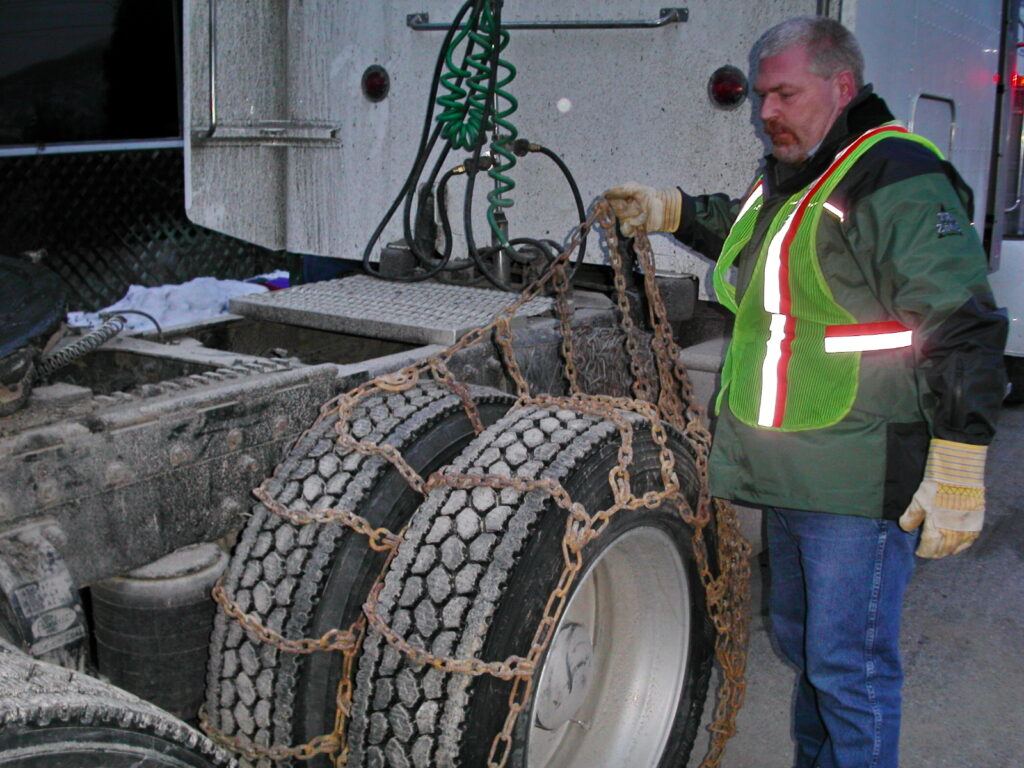Learn to chain up before it’s too late
As winter approaches, tire chain-up regulations start popping up in some jurisdictions. If you drive into British Columbia or Newfoundland and Labrador, you better be carrying chains and using them when mandated, or else you risk a ticket. Or worse, in slippery conditions, you could end up in a ditch.
Dipping into the U.S. with a load? Some states, including California and Colorado have strict chain-up laws, and regulations vary in other states.
Have you chained up before? Many drivers have not. It may be because they do not drive in areas that mandate their use or have been plain lucky and missed a major snow event in areas that do.

For new drivers, it could be a rough experience. No practical training on chaining up is included in the MELT curriculum in Ontario. They are expected to learn on their own. When they start working at a fleet, some may even be given equipment without tire chains. The onus is on the driver to make sure they have the proper gear and know how, where, and when to use it.
A quick search on YouTube lists many videos showing how it is done. Only a few were filmed by drivers out in the snow, on the side of the road. Others explaining the task were mostly in a warm, dry, and safe environment like a yard or shop. In winter conditions chaining up is going to take longer and there will be struggles.
Imagine doing it in the dark while the snow is coming down, wind is whistling around you, feet frozen and hands numb, cold air chilling your lungs and vehicles whipping past on a nearby roadway.
It is not fun, and it is not easy. The chains are heavy and uncooperative at times. The more uncomfortable one gets, the more difficult the task and one is prone to make mistakes, which could prove fatal.
Most companies will tell drivers to make the decision on whether to continue driving or parking their rig in bad weather. Some folks prefer rolling, others are more circumspect.
A veteran driver who has safely driven millions of miles parks his truck when tire chain regulations are in place. He carries the chains but has seldom used them. He reasons that chained up, he has to crawl along, sometimes at 25 km/h or slower. The chances of something going wrong or getting into a crash are also increased. It burns up drive time and a lot of fuel. He just waits out the storm and heads out once the roads have been cleared.
Other drivers may not have the luxury to wait and decide that it is safe to proceed with chains. It is a personal choice.
The sensible thing to do would be to practice installing tire chains in the warmer months, preferably in a yard. This will increase confidence and save time when the need arises. The warmer months are a mere memory now. If it is not too bad outside, take the time for a few practice runs at installing the chains.
When the time comes, there will be less stress, no tickets and more importantly, it could save your life and get you home safely.
Have your say
This is a moderated forum. Comments will no longer be published unless they are accompanied by a first and last name and a verifiable email address. (Today's Trucking will not publish or share the email address.) Profane language and content deemed to be libelous, racist, or threatening in nature will not be published under any circumstances.